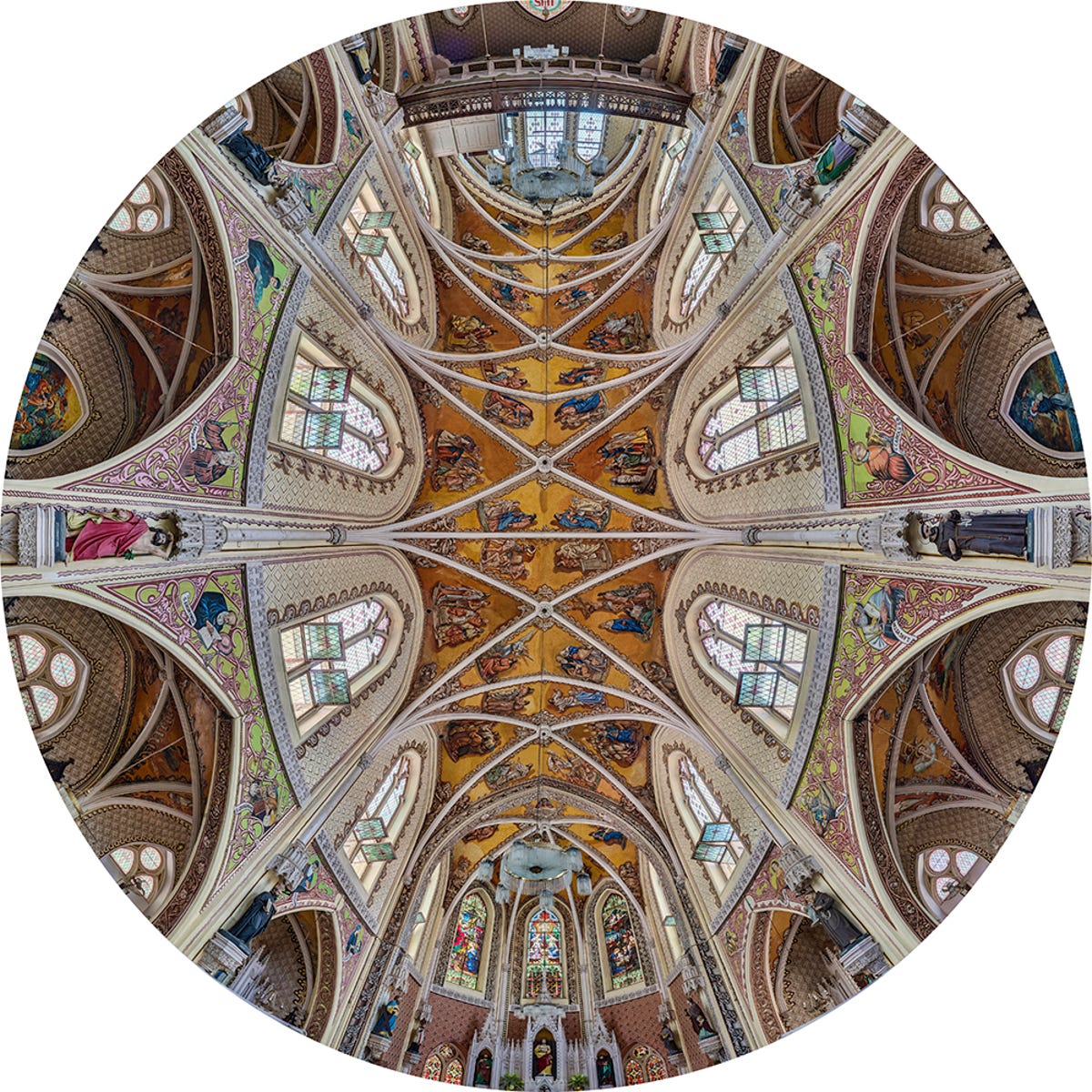
Cathedral of the Holy Name
Currently showing in one of India's most established art and history museums, 'Look Up Mumbai' explores the architecture of India's most populous city through the ornate ceilings of its Art Deco, Indo-Saracenic and Neo-Gothic architecture (such as the vaulting ceilings of the Cathedral of the Holy Name, pictured here). But while visitors might have seen some of these buildings before, the exhibition shows them in a new light -- projected in 4K resolution, around a massive 360-degree, 6-metre inflated hemisphere, known as the DomeLab.
Inside the Museum
The exhibition is the brain child of Australian media artist Sarah Kenderdine, who installed her DomeLab inside the larger 60-foot high dome of Mumbai's Chhatrapati Shivaji Maharaj Vastu Sangrahalaya (pictured, formerly the Prince of Wales Museum). Inside, visitors lie down on a custom-built couch and gaze up at 360-degree photographs of famous Mumbai ceilings, projected onto the highest resolution touring dome in the world.
The Exhibition in Action
Visitors to the museum, lying back on the custom-built sofa and enjoying the projections in "Look Up Mumbai."
Dr. Bhau Daji Lad Museum
Kenderdine and her media artist collaborators Berndt Lintermann and Jeffrey Shaw created each image with the help of Hong Kong photographer John Choy. Choy used one camera on an automated rig, which rotated and moved vertically to take roughly 200 photographs of each building. The result, according to Kenderdine was 68 different "360-degree gigapixel images, comprised of multiple single shots," which are then stitched together using AutoPano software.
Adishwarji Jain Temple
The images appear on the inner wall of the DomeLab thanks to eight projectors set up around the space. According to Kenderdine, the projections can be driven either by a single computer running realtime applications or a cluster of computers for movies.
Cowasjee Jehangir Convocation Hall
Because so many individual photographs go into making each projected image, the result is incredibly realistic. Says Kenderdine: "It's a very high-resolution dome -- it's technically what's called a 4K dome -- but it has a very high density of pixels across the screen overall. It's an absolutely brilliant machine."
Shree Siddhivinayak Temple
"[The image] takes the architectonic shape of the dome, so it has this really convincing sense of height," said Kenderdine. "You feel like you're really looking way up...looking in to the recesses of the roof space. A lot of those images are maybe ten storeys up sometimes, and the dome allows those images to really breathe with the same space. It looks like you're actually standing down there, looking up."
Mount Mary Basilica
Even the creators of the work never know exactly what visitors will see on a given day. An algorithm randomly chooses a different image and a different transition between images each time. As a result, "if you were to stay there for a couple of hours, you would never really see the same thing."
Global Vipassana Pagoda
While visitors to the museum get to experience the sense of height and space, thanks to the shape of the DomeLab, the photographs also take on a life of their own when they're flattened into 2D images, becoming what Kenderdine describes as "kaleidoscopic." The artists plan to make a book from these images, shedding light on the architecture of the city of Mumbai.
Gateway of India
One of Kenderdine's favourite images, the interior shot of the 26-metre high Gateway of India features a double dome that she describes as "spectacular."
Municipal Corporation Building
The exhibition has been expressly designed to open up spaces that visitors to the museum might not ordinarily have access to. With 4,000 visitors a day, 7 days a week, the museum is giving plenty of people a chance to see the city in a new light.
Chhatrapati Shivaji International Airport T2
It's not just heritage buildings that get the 3D treatment in "Look Up Mumbai" -- the city's Chhatrapati Shivaji International Airport takes on new life in the exhibition. Terminal 2 of the airport has been designed to resemble a peacock's tail, with different-coloured pieces of glass embedded in the ceiling.

